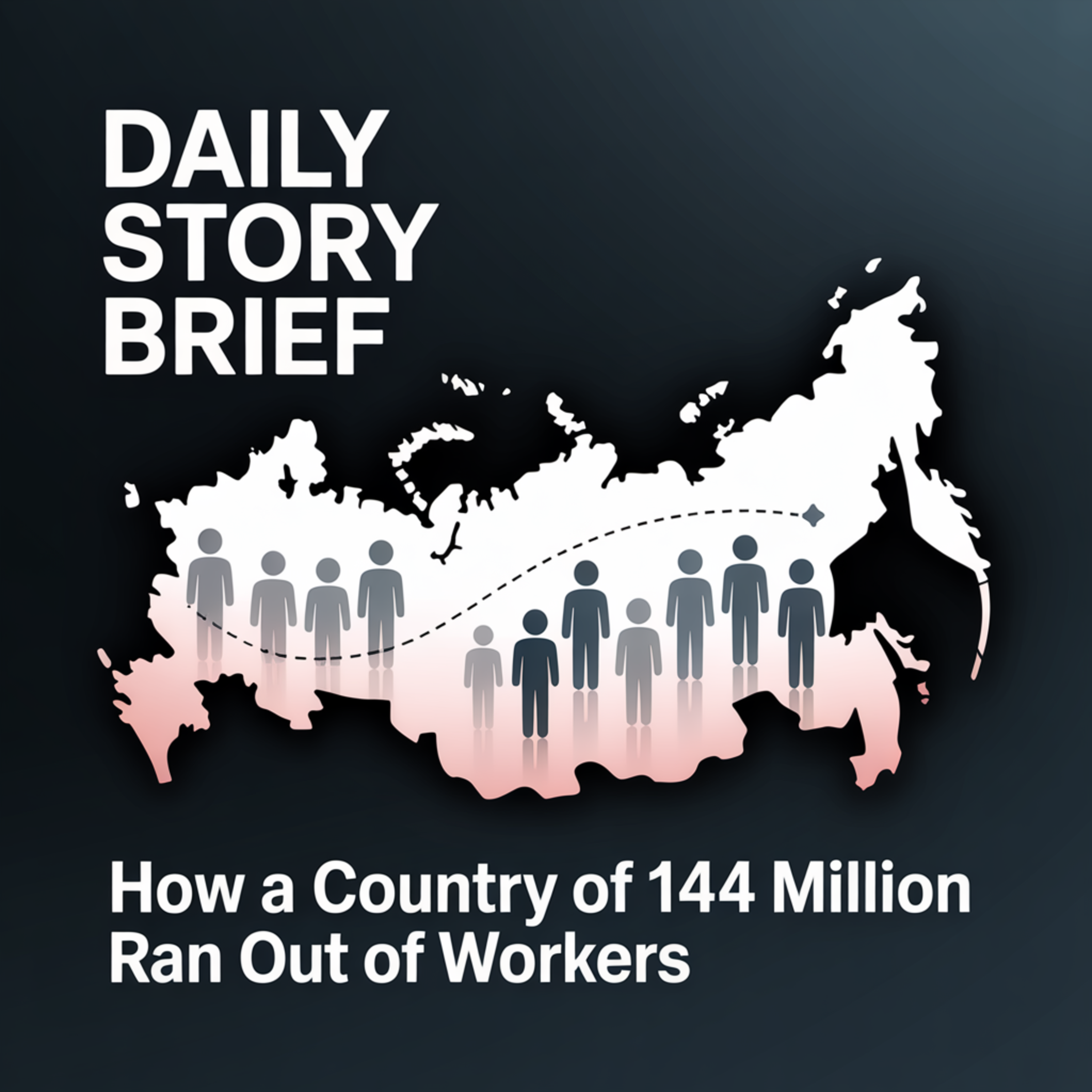Podcast Episode Details
Back to Podcast Episodes
How a Country of 144 Million Ran Out of Workers
Season 1 Episode 1
How does a country of 144 million people run out of workers? In this episode of Daily Story Brief, we unpack how Russia’s labour crisis became one of the most dangerous threats to its economy and long-term stability.
Russia’s demographic crisis didn’t start with the war in Ukraine—it started with the collapse of the Soviet Union. When the USSR fell in 1991, a brutal economic shock sent birth rates plunging and death rates soaring, creating the infamous “Russian cross,” the point where the lines for births and deaths cross on a chart. From the early 1990s onward, deaths routinely outnumbered births, and Russia’s population began to shrink even in peacetime.
In this daily news explainer, we walk through how that early trauma created a hollowed-out generation. Fewer children were born, male life expectancy stayed low, and public health problems—from alcoholism to heart disease—meant millions of men never reached retirement. By the 2000s and 2010s, Russia was already an aging society with a shrinking pool of working-age citizens, even as the government tried to reverse the trend with cash incentives and pro-natalist campaigns.
Then came the full-scale invasion of Ukraine in 2022—and the demographic crisis hit fast-forward. Mobilisation orders pulled hundreds of thousands of mostly young men out of the civilian workforce. At the same time, a massive exodus of skilled professionals, IT workers, and entrepreneurs left the country, creating a “brain drain” on top of the existing “gray wave.” Casualties at the front, combined with wartime uncertainty, further discouraged families from having children. Together, this turned a slow-burn demographic problem into an acute labour shortage.
We’ll break down the numbers behind this workforce disaster: record-low official unemployment rates that look “good” on paper but actually signal a labour market stretched to the breaking point, millions of missing workers compared to past decades, and a government that increasingly relies on measures like prison labour and tightened controls on internal mobility to keep factories and infrastructure running.
This episode also looks at how Russia’s economic model amplifies the crisis. For decades, the country has depended on a rigid, oil-and-gas-centric system where energy exports fund the state and crowd out more diversified, high-productivity sectors. That model demands a steady flow of low-cost labour for extraction, transport, and heavy industry—but the domestic workforce is shrinking, and productivity growth is weak. Even before the war, analysts warned that this resource-dependent model “no longer delivers” sustainable growth.
Could Russia simply replace missing workers with migrants from Central Asia, as it has in the past? We explore why that safety valve is now failing. The war, a weaker ruble, the risk of migrants being pressured into military service, and rising xenophobia and state crackdowns on Central Asian workers have all made Russia a less attractive—and more dangerous—destination. Recent reports show declining migrant numbers and increasing harassment and violence against those who do arrive, closing off what used to be a critical source of replacement labour.
If you want more than headlines—and you want current events explained in plain language—hit follow on Daily Story Brief. Share this episode with a friend who keeps hearing about Russia’s “demographic crisis” but doesn’t know what it actually means. One story, clearly explained, in your ears every day.
Published on 2 days, 16 hours ago